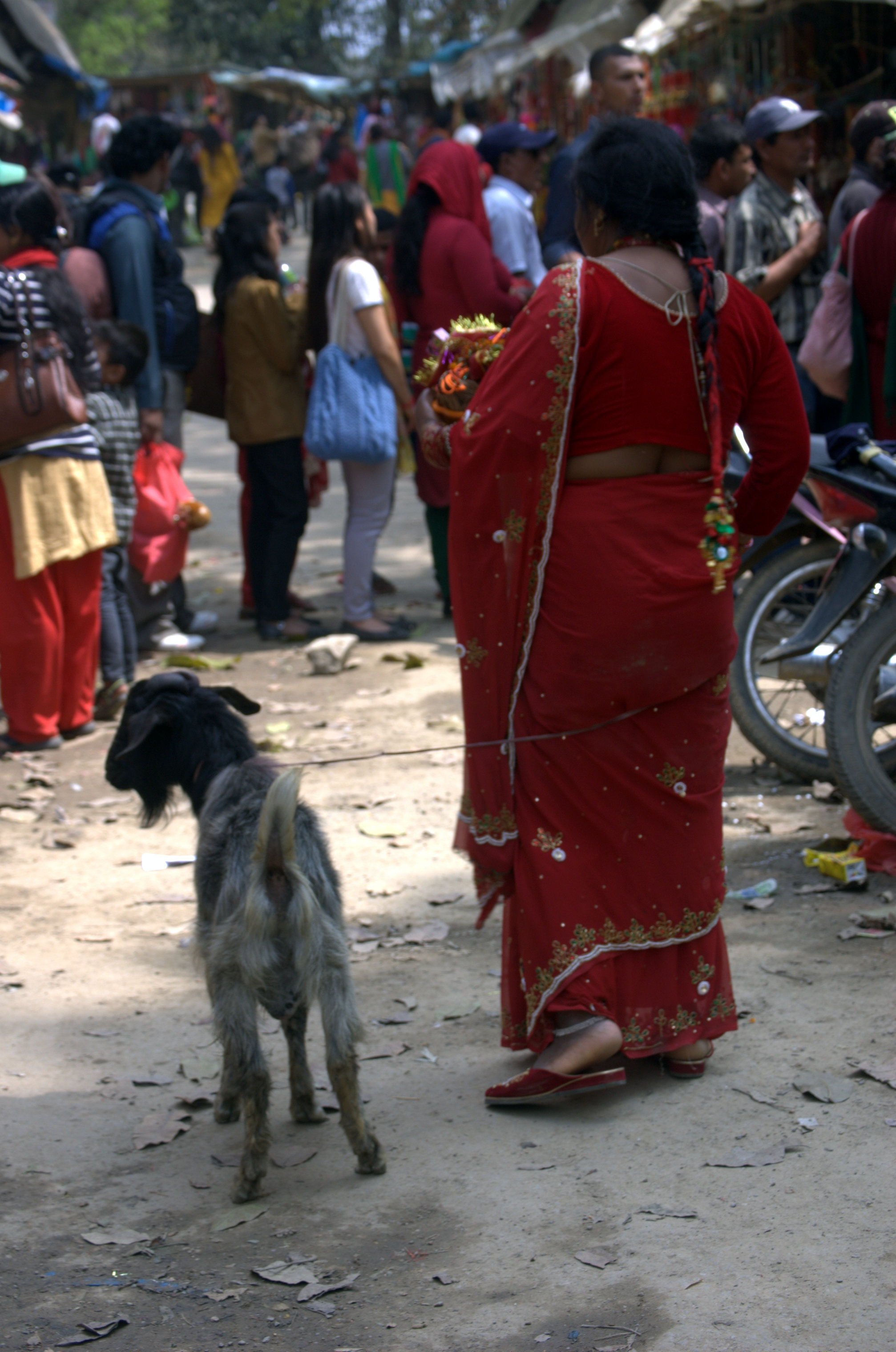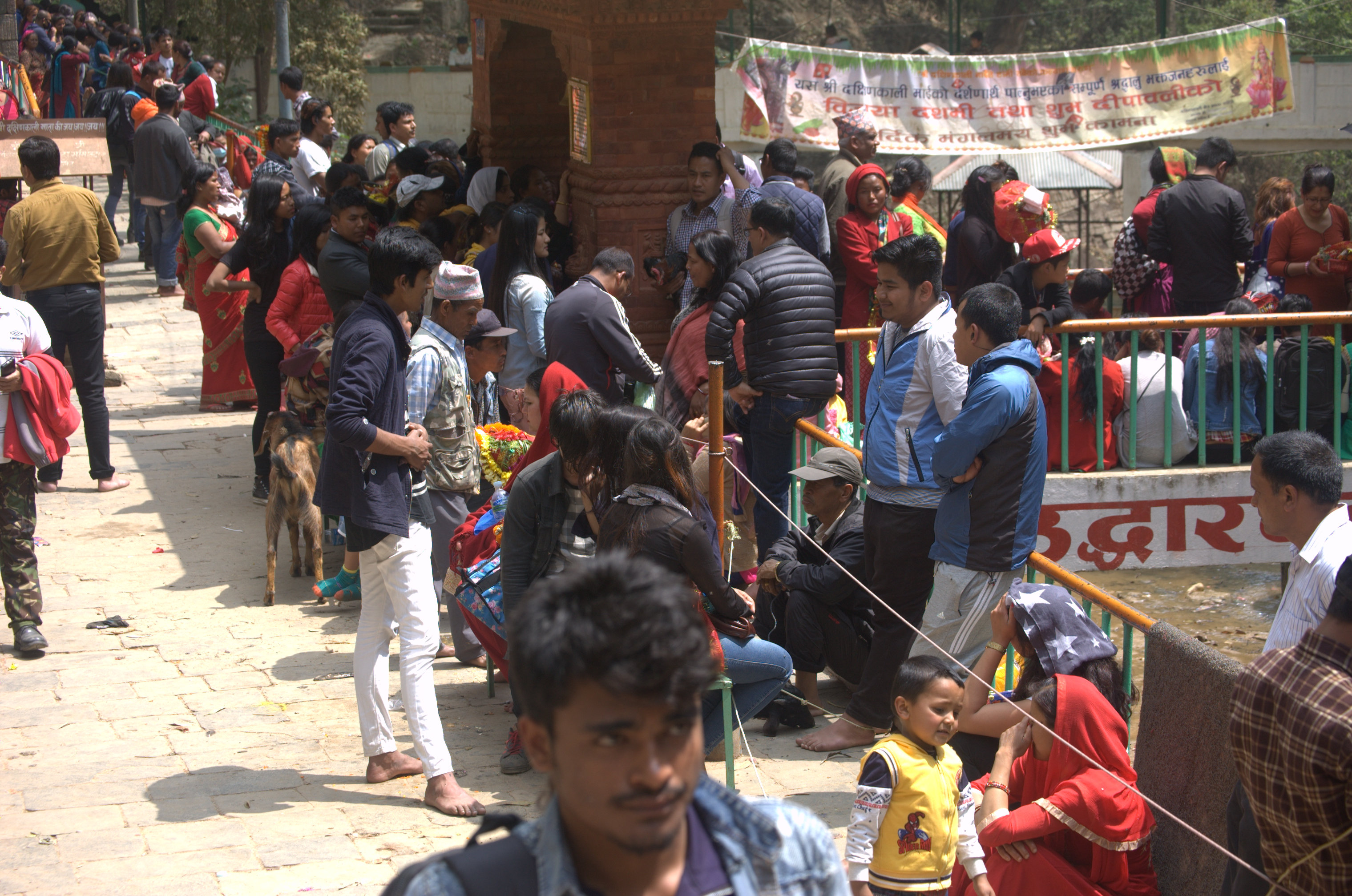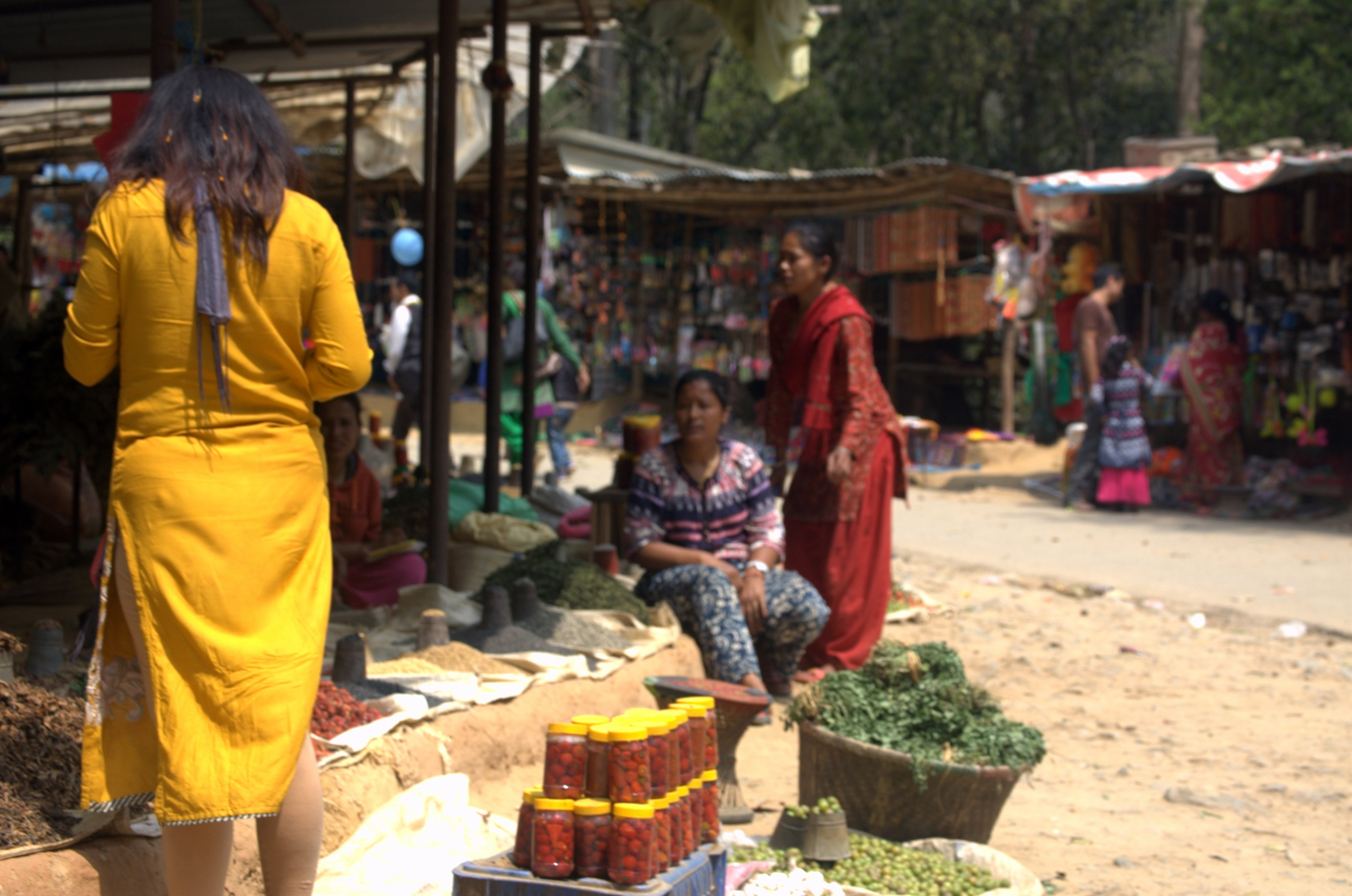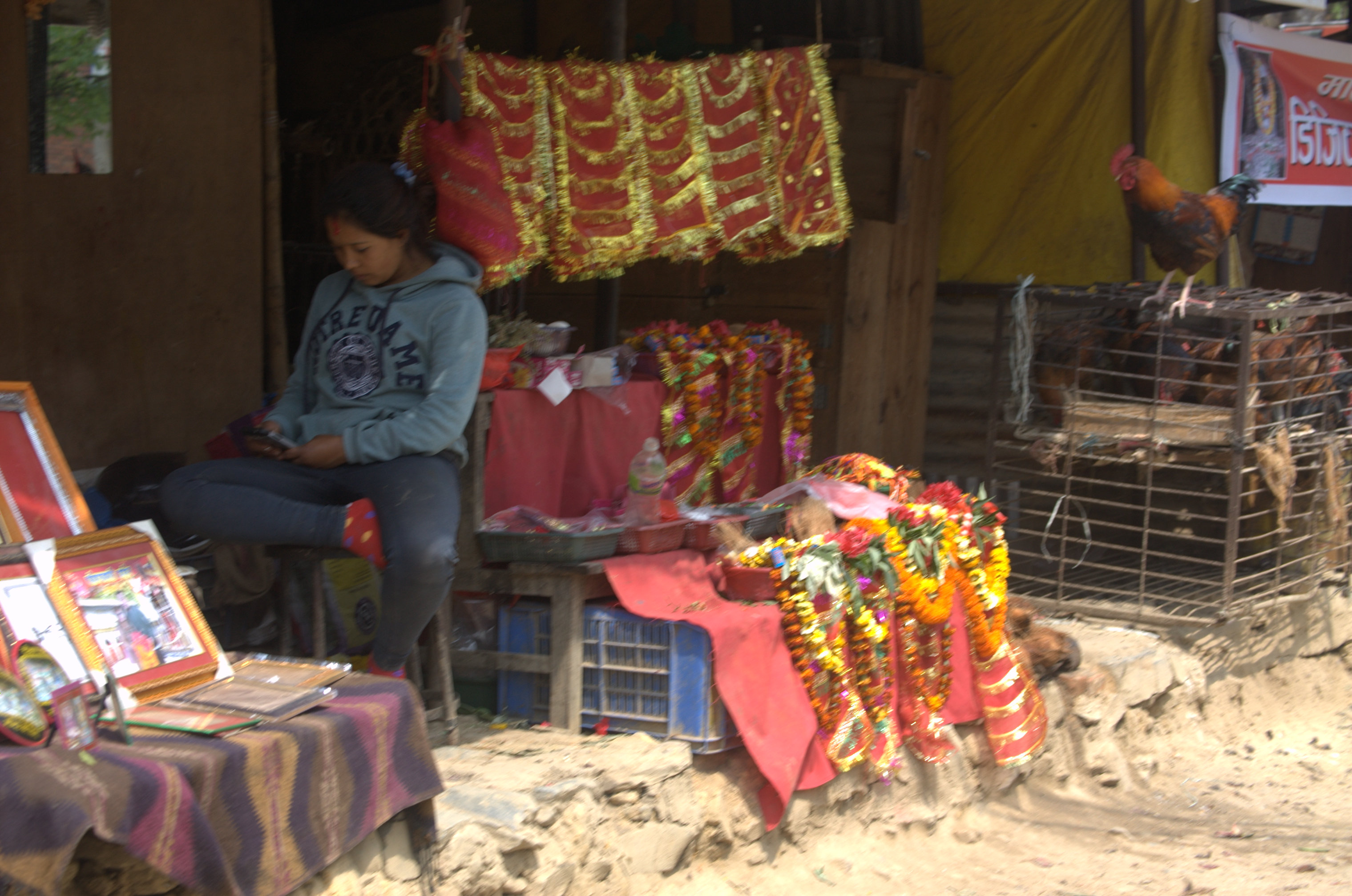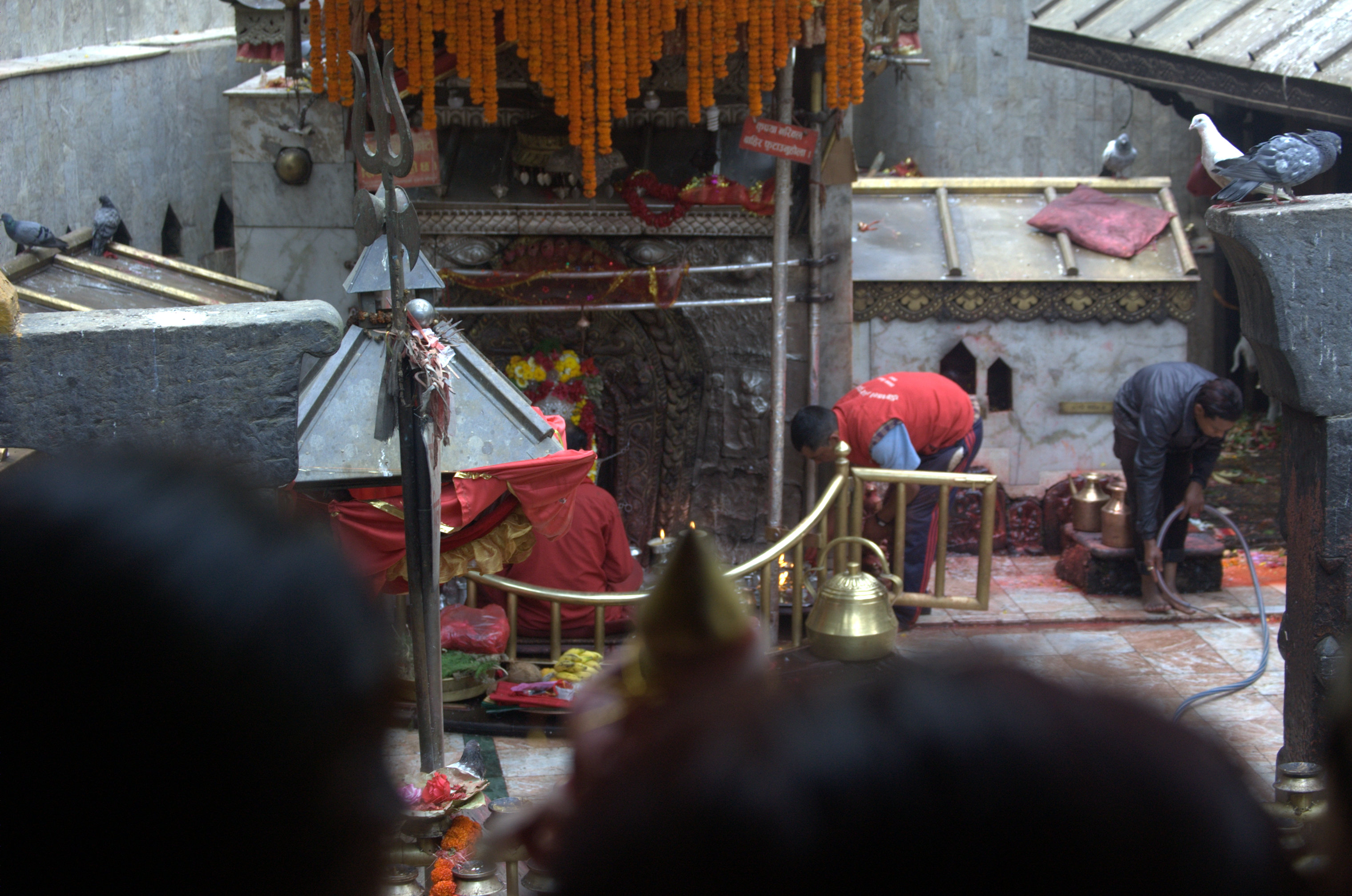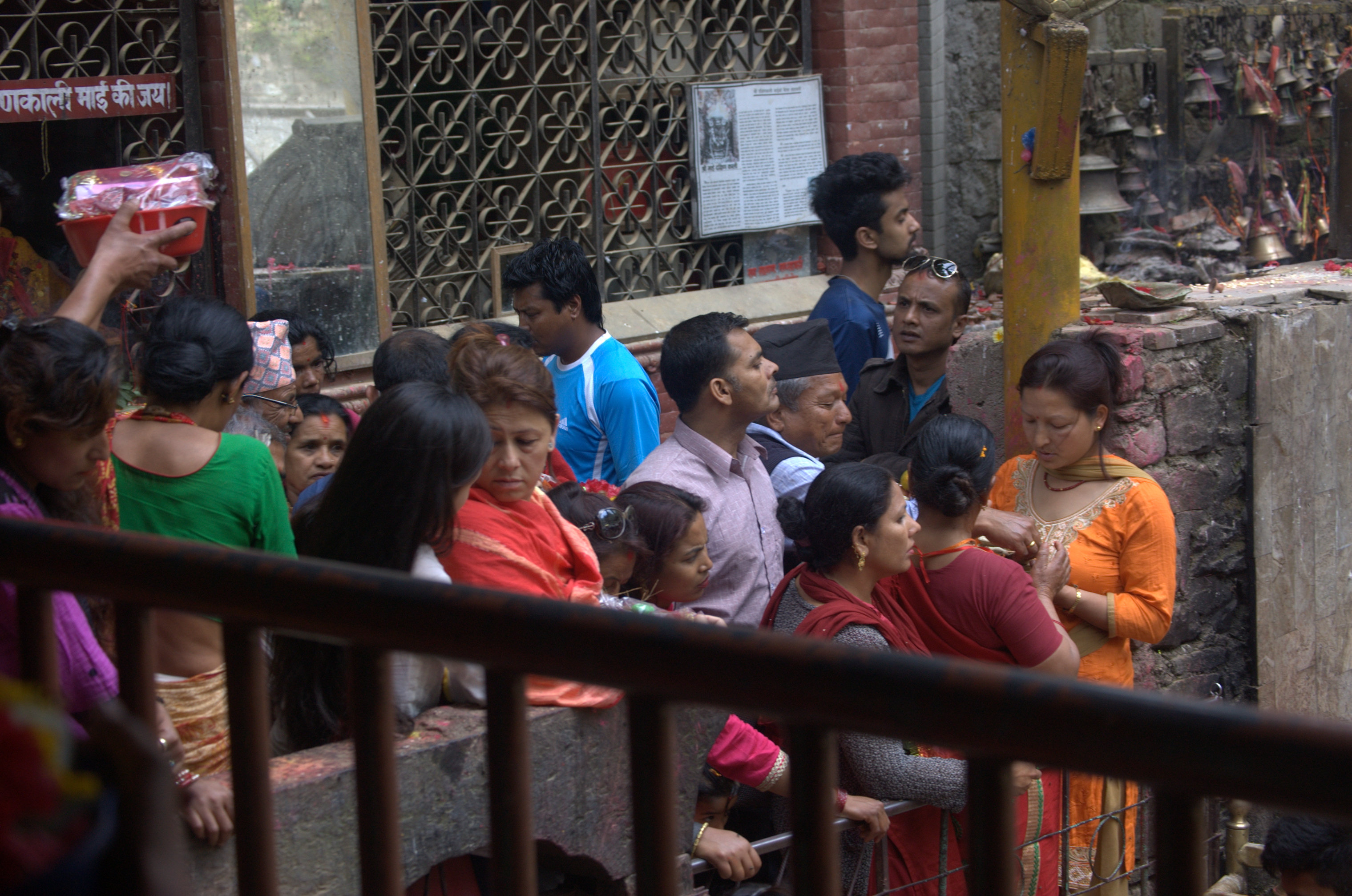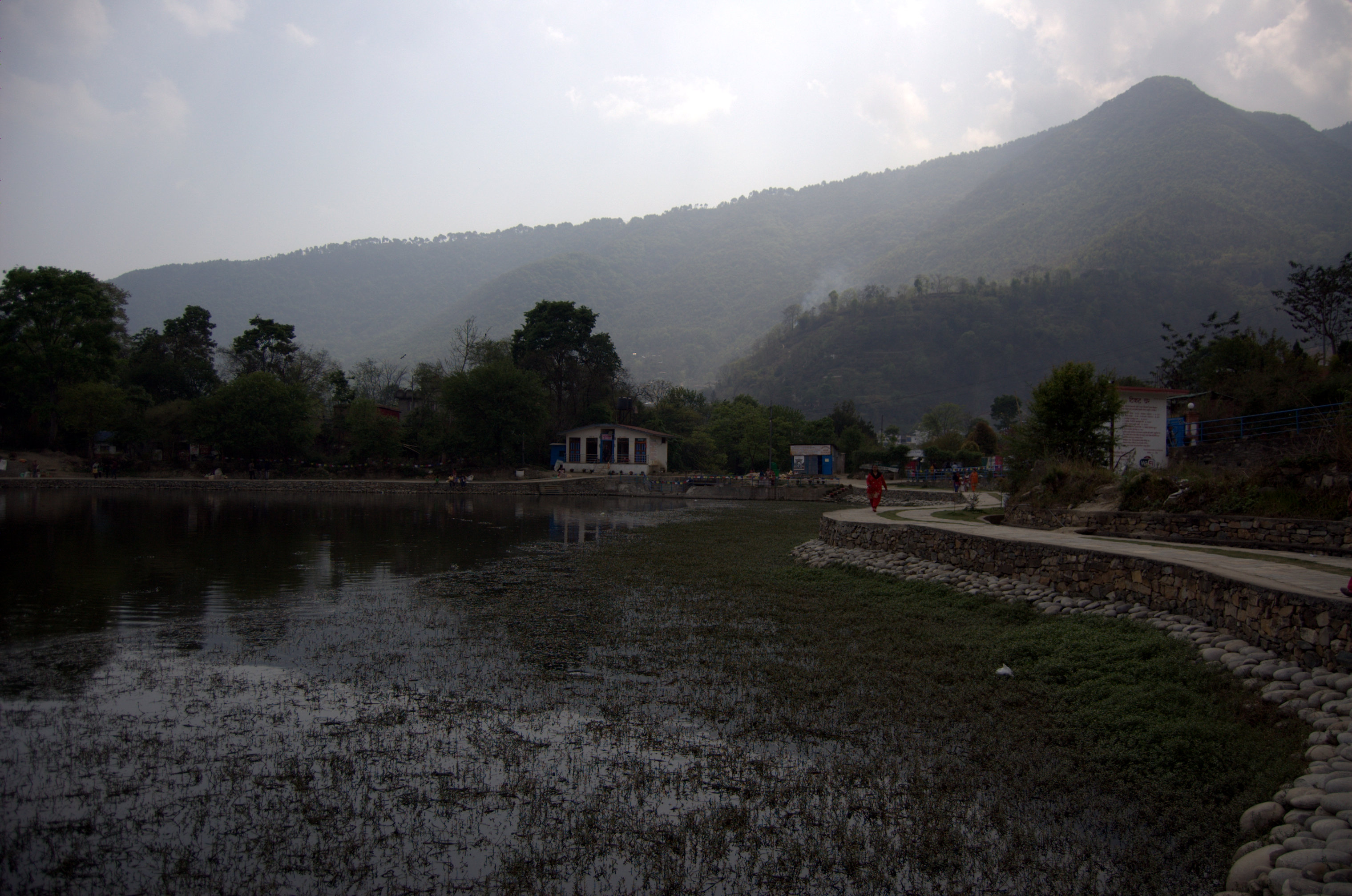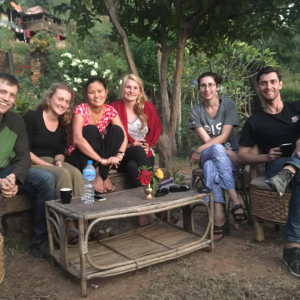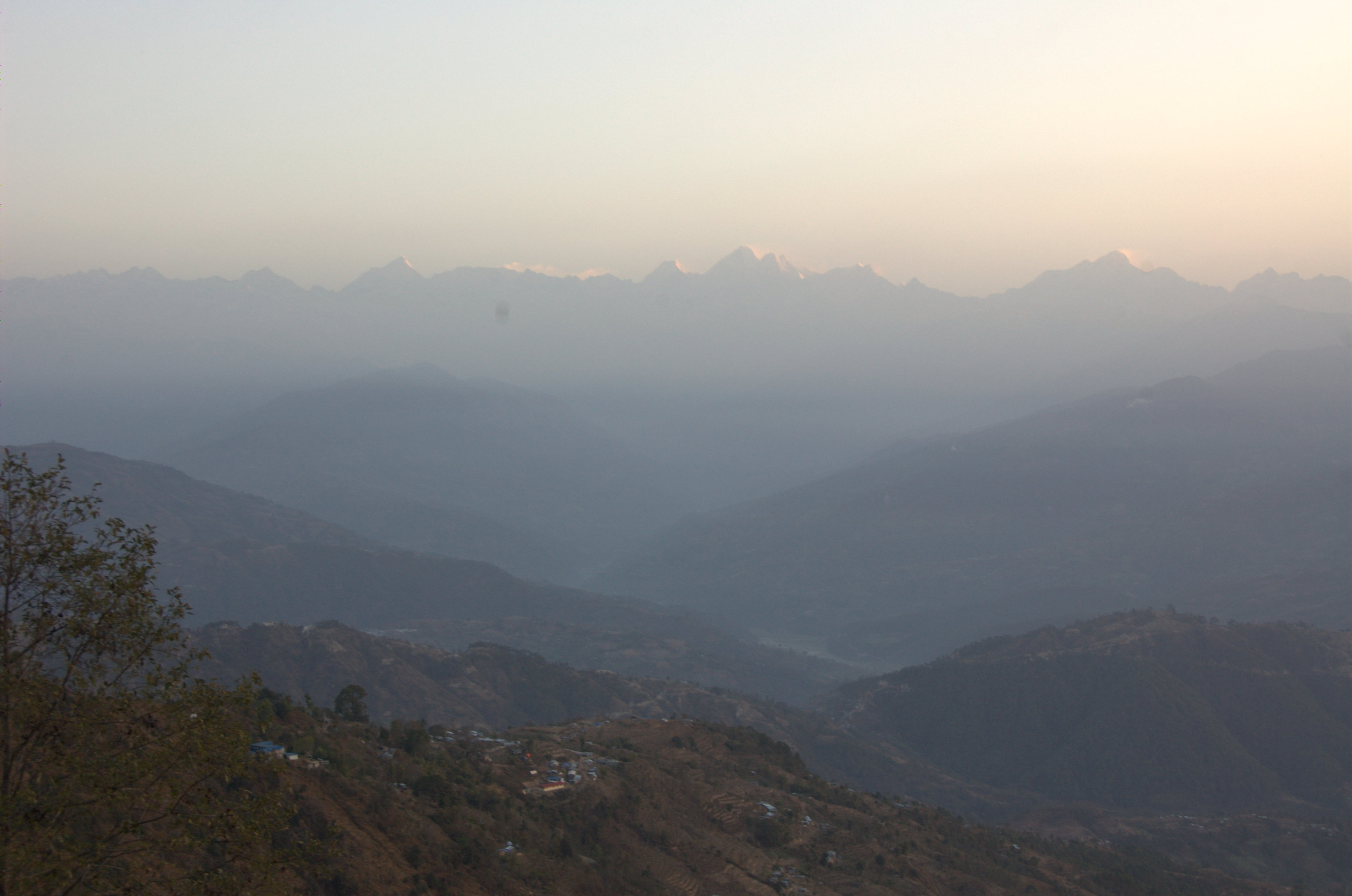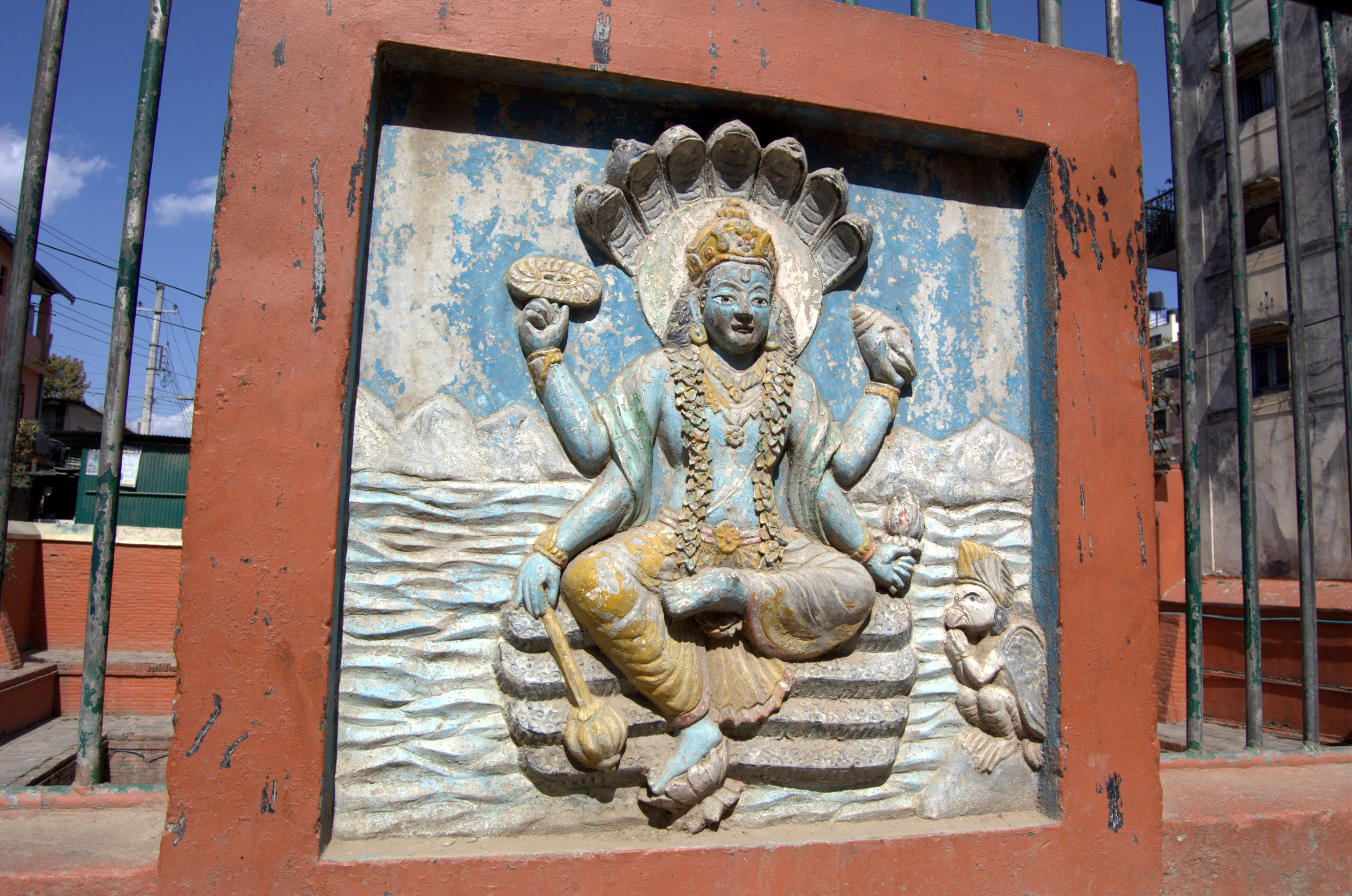Most Hindu temples I’ve been in have a light, joyful feeling to them; people greeting each other and feeding pigeons. Dakshinkali, the sacrificial temple, does not. The goddess worshiped here, Kali, is revered for her elimination of evil, and the temple’s atmosphere very much reflected that destructive nature of the goddess.
The temple is open for sacrifices every Saturday, but is located two hours outside of the city, so going there is a big deal and a rare occurrence. The line to offer something to the goddess looked to be a half mile long or so, looping around the temple and sprawling in different directions; many people had gotten there before dawn. Most people were dressed in their very best clothes. They all carried animals or flowers to sacrifice in the temple.
- The line
- The sacrificing line
There were vendors right outside the temple selling animals and other goods people could sacrifice if they didn’t bring their own. There was also a man selling family pictures, and I saw a decent line for it. Afterall, a trip to Dakshinkali is a rare but very important rite for Hindus.
Non-Hindus are not allowed inside, so I couldn’t get a good view of the sacrifices, but it certainly wasn’t what I expected in my mind. I stood in a crowd of observers that were in fervent prayer. I watched people approach the priest with their animals (mostly goats and chickens) and leave with the meat.
- The priest during a sacrifice
- People observing sacrifices
It actually makes a lot of sense from a health standpoint. A lot of people can’t afford a butcher for their livestock, and this is a clean place for them to prepare meat, ensuring that their food is safe and uncontaminated.
The way to the temple is absolutely beautiful. There’s a really nice artificial lake (perhaps the only one in the country) where people can grill their fresh meat and have a picnic at on their way leaving the temple.
